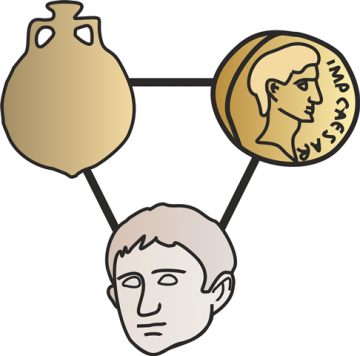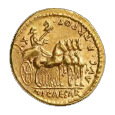MERCURY: simulating the Roman economy
Project Summary
Project MERCURY aims to develop resources and case studies to encourage the use of computational modelling in Roman economy studies. It will provide practical tutorials, an open source model library implementing common Roman economics concepts that can be reused, and organise practical workshops to teach computational modelling to scholars in Roman studies at different stages of their careers. A range of case studies will be performed to illustrate how the method can make important contributions to Roman economy studies, exploring phenomena such as Roman amphora reuse, Roman economic integration and ceramic product preference.
Find out more about the project and access resources at ProjectMERCURY.eu
Resources
Explorable Explanations: An intuitive and engaging online introduction to what computational modelling is and how it can be of use to Roman studies. Developed by the project MERCURY interns Yayoi Teramoto Kimura and Chico Camargo.
Tutorials: Practical step-by-step handouts teaching agent-based modelling applied to Roman economy examples, requiring no prior coding experience. These tutorials can be used for self-study or as teaching resources for lecturers.
Model library: Simple agent-based models providing code for implementing key phenomena or datasets commonly used in Roman economy studies, such as uploading a Roman transport network, social networks connecting traders, supply/demand/price-setting mechanisms, etc.
Datasets: A range of empirical datasets that can be used in computational modelling will be made openly available for reuse in research contexts. In addition, openly available datasets developed by other projects will be modified to allow their easy use in computational models for Roman economy studies. These include a large database of Roman ceramics, population estimates of urban settlements throughout the Roman Empire, and Roman road networks.
Workshops: Two-day workshops will be hosted to where participants at different stages of their careers will be able to get practical experience with creating agent-based models for Roman studies and learn from case studies presented by invited speakers.
Case Studies
Roman amphorae reuse, contents and provenance: What is the impact of different processes and degrees of reusing amphorae containing oil, wine or fish on archaeologists’ ability to interpret amphorae distributions as distributions of foodstuffs?
Aim: Study the problematics surrounding the main archaeological data type used as evidence for Roman trade flows.
Method: computational simulation of the impact of reuse processes
A collaboration with Dr. Alessandra Pecci at the Faculty of Geography and History, University of Barcelona.
Cultural transmission and product preference: How did traders affect each other’s buying/selling strategies? What drove a consumer at a Roman market to buy one of multiple comparable products?
Aim: Evaluate the possibility that typological changes observed in Roman tableware could have been the result of biased or unbiased copying of cultural traits popular at certain markets. Explore whether theories of product preference can explain changes in the proportion of local versus imported ceramics at the site of Jerash.
Method: ceramic data analysis at the site of Jerash in Jordan, simulation of the effect of cultural transmission theories (e.g. unbiased, conformist bias, rarity bias) on the long-term consumption patterns of ceramic products.
A collaboration with Dr. Izabela Romanowska and Simon Carrignon (Barcelona Supercomputing Centre), Prof. Dr. Rubina Raja (Classics, University of Aarhus), Prof. Dr. Achim Lichtenberger (Classics, University of Münster).
Transport systems: How did the infrastructure of the Roman transport system and the limitations imposed by physical geography and transport technology structure Roman trade and information flows?
Aim: Evaluate the impact of the Roman transport system (infrastructure, geography, technology) on the flow of commercial information current in interdependent social networks.
Method: refining and analysing current knowledge of the Roman transport system, study transport network change, conceptualization of interdependency between transport network and commercial social networks, simulation of flow of goods and information over interdependent transport and social networks.
A collaboration with Prof. Albert Diaz Guilera and Dr. Luce Prignano (Faculty of Physics, University of Barcelona), and Dr. Pau De Soto (Instituto de Ciências Sociais e Humanas, Universidade Nova de Lisboa).
Urbanism and urban networks: What was the impact of the redistributive and consumption roles played by large urban centres on the distribution of goods? How did social network structures scale with urban population size and could this present a new paradigm for Roman market integration?
Aim: Study the impact of population distributions and population change on trade, production and consumption.
Method: conceptualization of theories of urban influence on production/trade/consumption, conceptualization of scaling urban social network structures with population size, study of population change in Roman urban settlements, simulation of urbanism theories.
A collaboration with Dr. Jack Hanson at the Department of Anthropology, University of Colorado Boulder.
Project Funding
Project MERCURY is funded through atwo-year early career Fellowshipawarded to Tom Brughmans by The Leverhulme Trust.




